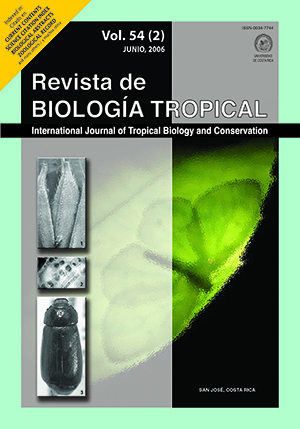Abstract
The catfish, Eremophilus mutisii, was cultured under different densities in artificial rainfall reservoirs
at Caldas, Boyacá, Colombia. At capture, the average total length of the animals was 10 cm and the weight
ranged between 9 and 10 g. These fish were in initial stages of sexual development. After a year in the reservoirs,
they had increased in length and weight as follows (densities in parentheses): 5.22 cm and 27.23 g (0.5
individuals/m2)); 1.98 cm and 8.79 g (1 individual/m2), and 2.45 cm and 0.82 g (2 individuals/m2). They were at
the early stages of sexual maturity, and their condition factor fluctuated between 0.61 and 0.96. They preferably
ingested insect larvae that were found in benthic and littoral communities of the reservoirs. The benthos was
dominated by ephippia of Daphnia, lumbriculids, and chironomid larvae. The biomass of benthic organisms
ranged between 0.1126 and 1.3847 g/m2. In the littoral community aquatic insects were the most important
component, especially the hemipterans. The biomass of the littoral fauna ranged between 0.14 and 4.05 g/m2.
Comments

This work is licensed under a Creative Commons Attribution 4.0 International License.
Copyright (c) 2006 Revista de Biología Tropical






